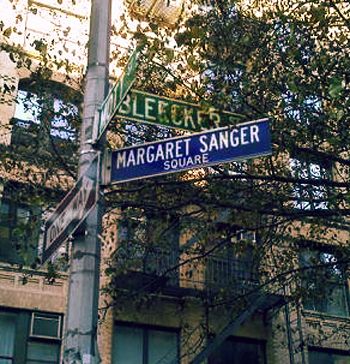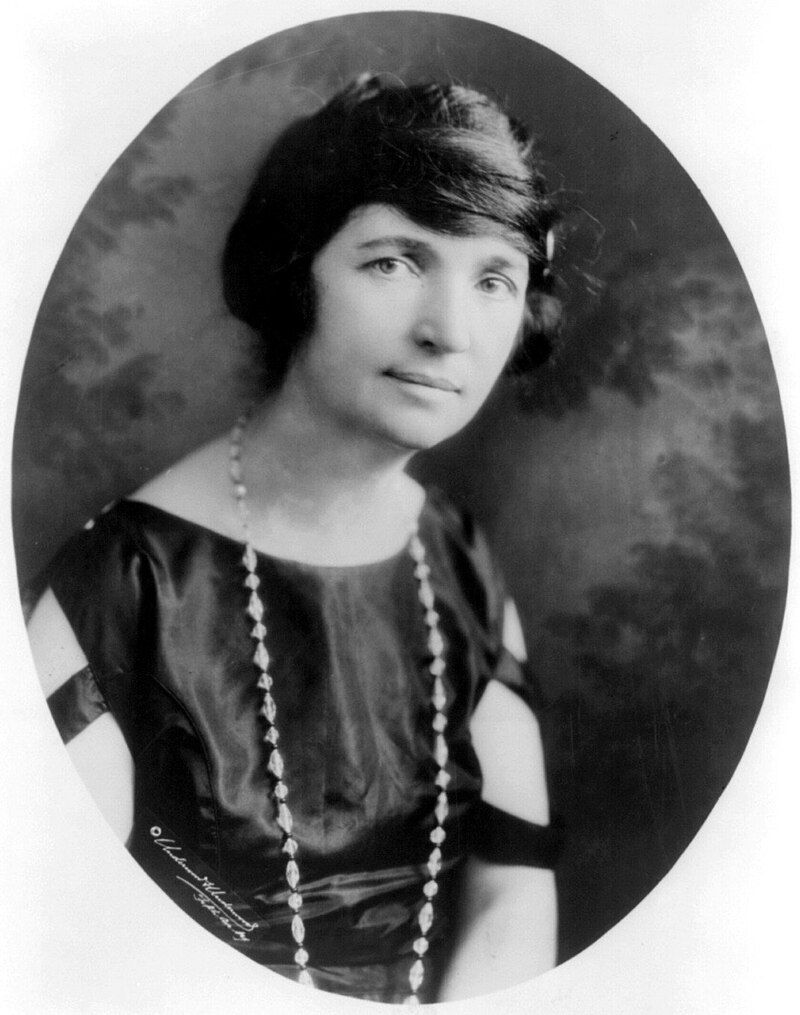Maggie Higgins may have been the most consequential American woman. When it comes to the change she wrought, they don’t come much more important than Margaret Louise Higgins.
She was born in Corning, New York in 1879 to Irish immigrant parents. Her father, Michael Higgins, a free thinker and atheist, was a headstone maker who specialized in sculpting angels.
Maggie’s mother, Anne Purcell Higgins, married Michael in 1869. Both parents had an enormous influence on their daughter – Anne in particular, for in 22 years she conceived 18 times with 11 children surviving.
After a married life of almost constant pregnancy and near poverty, Anne passed away at the age of 49 from tuberculosis.
For some years after, Maggie tended to her brothers and sisters, and domestic duties in the Higgins household. But eventually she rebelled and set out to do her life’s work as a birth control activist. We know her now as Margaret Sanger.
She became a nurse probationer at White Plains Hospital. At that time, according to Maggie, doctors tended to keep business hours at hospitals, so during the night nurses were forced to make vital decisions about the health of their patients.
She became a nurse probationer at White Plains Hospital. At that time, according to Maggie, doctors tended to keep business hours at hospitals, so during the night nurses were forced to make vital decisions about the health of their patients.
Margaret Sanger Square in Greenwich Village.
She specialized in obstetrics and gynecology. Women’s lack of knowledge of their own bodies due to church teaching and social convention astounded her.
Precocious and independent, her midwifery skills became well known and she was often asked by grateful patients how they could delay further pregnancies.
Doctors rarely gave such advice, for the Comstock Law of 1873 defined contraception as obscene and illicit and besides most Christian churches railed against it.
Maggie might have continued her nursing career to quiet and local acclaim, but two events set her on a different track. She contracted tuberculosis, the curse of the Higgins family, and she came to the attention of William Sanger, an aspiring architect and artist.
With her auburn hair and vivacious personality Maggie would remain attractive to men all her long life. Sanger was no exception and he fell head over heels in love with this young Irish nurse.
Jewish-Irish marriages were rare in those days but Maggie had long before rebelled against the dictates of the Catholic Church. The two settled in their dream house that Sanger designed and constructed in Hastings-on-Hudson.
Despite her tuberculosis, Margaret Sanger had three children with her husband.
William Sanger was an active member of the Socialist Party and Margaret threw herself into political activity.
One cold winter’s night, a fire from an overheated stove burned down their home. Sanger rebuilt the house but Margaret’s suburban dream was over. She moved her family to an apartment in Manhattan and began socializing in Greenwich Village with such characters as Jack Reed, the subject of "Reds," and Emma Goldman.
In a city jammed with immigrants she found much work as a visiting nurse on the Lower East Side and was horrified by the poverty, lack of any sex education, and the drastically high death rate among the newborn.
She became a member of the International Workers of the World (Wobblies) and along with Elizabeth Gurley Flynn led the successful Bread & Roses campaign for a living wage and better conditions for the textile workers in Lawrence, Massachusetts.
But she never lost sight of the fact that working families could not prosper unless pregnancy could be regulated. She did not believe in abortion (except in a medical emergency).
In 1916 she and her sister, Ethel Byrne, opened the first family planning and birth control clinic in Brooklyn. When they were arrested Ethel went on hunger strike and became the first woman striker to be force fed in the United States.
Due to the ongoing publicity and notoriety engendered by the case, Judge Frederick Crane, in 1918, issued a ruling that allowed doctors to prescribe contraception.
Margaret Sanger overcame many obstacles in her life’s mission to make contraception available to all women, and in 1960 the FDA approved the sale of Enovid – the first hormonal birth control pill.
She died in 1966, a year after the U.S. Supreme Court’s landmark decision to legalize birth control for married couples in the U.S.
On July 13th, 2023 the FDA approved the first over-the-counter birth control pill that will allow all women and girls to buy contraceptives. Maggie Higgins’ impossible dream back in Corning is about to come true.







